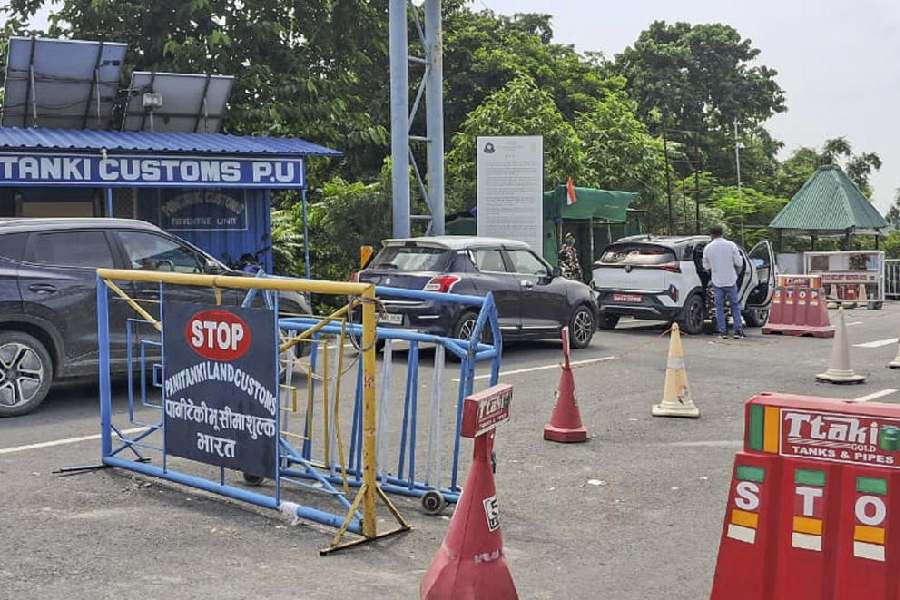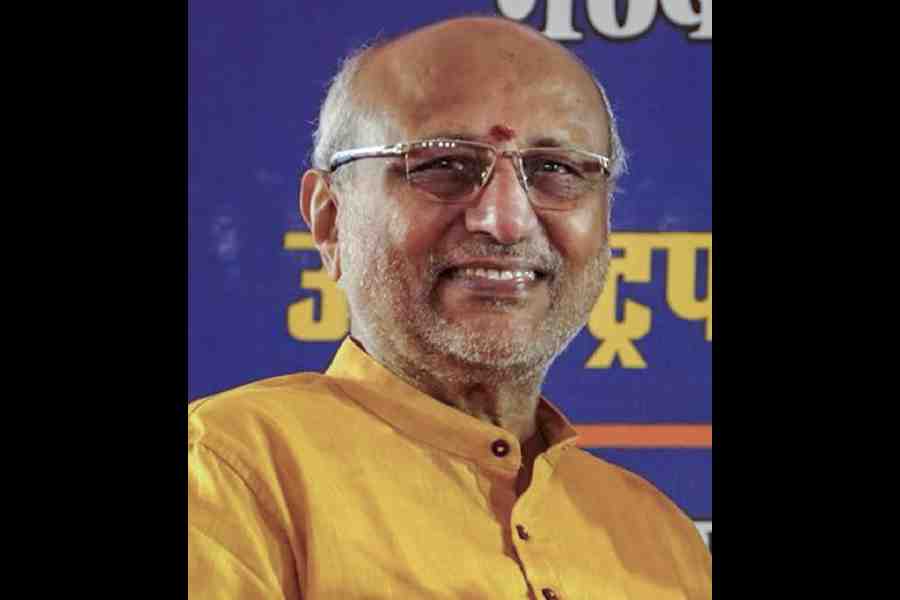 |
Why on earth would you want to watch television programmes on your mobile phone? The screen is tiny and you can, after all, watch TV in the comfort of your home. To be sure, you may not want to wait till you get home to watch cricket matches on your mobile phone. And some experts argue that the ubiquitous cellphone already performs so many functions — it’s an FM radio receiver, it has still and video camera functions and works almost as an iPod. So why can’t watching TV be another of them?
Whatever the case, India’s 100 million mobile phone users could soon be glued to their handsets watching TV. “Initially you will see short videos, say, one minute edits of various television shows. They will be used more as ‘catch-up’ TV,” says a Star executive.
Look at what’s in the works.
By December, Doordarshan viewers in the metropolitan cities may be able to watch some Doordarshan channels on their mobile phones. Prasar Bharti’s engineer-in-chief N.S. Ganeshan promises to launch the service in Delhi first.
Star Network is talking to telecom companies on putting its channels on mobile screens. Without divulging details, a senior Star executive says, “Currently we are evaluating various options while working on our content (for the new medium).”
The Times group’s English news channel Times NOW can be viewed on the Reliance cellular network. Subscribers with high-end phones can see a streaming video of the channel. Times Global Broadcasting Company that owns Times NOW expects to launch the channel on other cellular networks as well.
Many mobile phone subscribers have already watched short video clips on their handsets. Next in line is live television broadcasts on what’s described as the “third screen.” Neeraj Roy, managing director of the Mumbai-based online marketing company Hungama.com, feels that mobile TV in India is a revolution waiting to happen. Agrees a senior Star Network executive, “Next year should see the launch of full-scale mobile TV platforms based on technologies such as MediaFlo and DVB-H (MediaFlo is backed by Qualcomm of the US, the code division multiple access — CDMA — company, and Digital Video Broadcast-Handheld is a European standard which Doordarshan is using to launch its mobile TV service). This will involve the launch of new handsets and new infrastructure deployment.”
At the moment, mobile customers can either download video clips or watch video streaming on their mobiles. For instance, a one-minute clip will take 30 seconds to download and viewing is uninterrupted as the content resides on your phone.
In video streaming, the content sits in a separate server and comes to the phone when you ask for it. The quality of viewing here depends on your connection speed. Mobile TV, on the other hand, involves broadcast technology, much like direct-to-home (DTH) or digital terrestrial broadcast. And the signal is especially tailored for mobile phone screens.
Doordarshan will use the digital terrestrial broadcast method to push its channel signals on cellphones. The state-owned broadcaster already has the infrastructure — the digital transmission towers it uses for terrestrial telecast of its channels — and is now putting up some additional equipment to get its television-on-mobile service going.
Broadcasters, telecom companies and mobile marketers feel that television on mobile phones will be the next big thing for several reasons. For starters, India already has more mobile phone homes (100 million) than television homes (90 million). And the importance of the mobile phone as a medium will only grow with the increase in the number of subscribers — India is expected to have 230 million mobiles by 2010. Roy believes that 20 million new mobile subscribers will be added in the next four months.
But higher mobile phone penetration may not be the only reason pushing television programmes on to mobile phones. “Consumer demand will also drive growth,” says Roy. Though live TV broadcasts are not yet available, subscribers have got a taste of video clips on their mobiles. Every day, an estimated 250,000 video clips are downloaded in the country. “These are barely 90 to 120 second shots and consumers are taking to them. Their response to live TV will be positive and big,” declares Roy.
Cellphone manufacturers such as Nokia and Samsung are likely to promote television on mobile through new mobile TV-compatible products. Internal research at Nokia, which has just launched a mobile TV phone called N 92, shows that 20 per cent of mobile service subscribers are likely to opt for television on mobiles. Observes Reliance Entertainment president Rajesh Sawhney, “Mobile phones are re-engineering how we consume entertainment and the medium will definitely get a big slice of the entertainment pie.”
Statistics from the FIFA World Cup back Sawhney’s point. The mobile phone industry estimates that revenue from mobile TV resulting from the five-week FIFA World Cup was $1.5 billion. Television programmes are available on mobile phones in the United Kingdom, Germany and the United States.
What will television on the mobile screen offer in India? “What may work is humour, sports, news and, to some extent, drama. Action may not be delivered very well on the mobile,” says the Star India executive. Roy expects broadcasting and telecom companies to offer “pay per view” services, once TV on mobile phones catches on. His company, Hungama.com, already offers exclusive Bollywood content to overseas telecom companies for their mobile TV services. “You could say that we run a Bollywood channel (music, video and games) on the mobile for 47 telecom operators in 17 countries,” says Roy.
In India the company is waiting for things to move at the government level and for live television on mobile phones to take off.
Still, private broadcasters won’t find the going easy. Though television programmes can be received on mobile phones via terrestrial broadcast, the government does not allow private companies to transmit television signals terrestrially. Only Prasar Bharati is allowed to use terrestrial infrastructure for this. The Telecom Regulatory Authority of India (TRAI), the telecom industry’s regulatory body, however, has recommended that terrestrial broadcasting be opened to private companies.
Secondly, another technology uses a satellite to deliver signals to mobile phones. But using a satellite to deliver signals is expensive. Thirdly, telecom companies’ networks aren’t yet tailored for mobile TV. High-speed networks are required to send video data — and no telecom company yet has a 3G (third generation) network. “Our network is almost 2.75G while those of all others are lower. For our news channels the best frame we can give are 5 to 7 frames per second. Broadcast quality must have 25 to 30 frames per second,” explains Reliance’s Sawhney.
But the launch of 3G services has been caught up in a controversy over spectrum, the airwaves telecom companies need. They need more spectrum to launch 3G technology. The government has to first free spectrum and then evolve a formula to allocate it to different companies. What is more, launching 3G services is not cheap. Telecom companies will have to incur heavy capital expenditure to set up new cell sites. “For most of us the current cell infrastructure is good for voice and not so much for video,” Sawhney admits.
Also, there simply aren’t enough programmes going around to suit small screens. At a conference on the media in Mumbai earlier this month, MTV Network’s Asia Pacific president Nigel Robins specified that mobile TV needs “mobisodes.” “Content must be made for mobile screens. You cannot slap the same content on mobile that you use on television,” Robins said.
Finally, for mobile TV to be popular handset prices need to crash from the current Rs 25,000 plus. So while India may be on the threshold of launching television-on-mobile services, some issues need to be resolved first. “Sampling content on the mobile is definitely happening. But live broadcasts will be a challenge,” concludes Sawhney.
Dialling into TV
By December, Doordarshan may launch services in the metros
The Star group is talking to telecom companies on this
Nokia and Samsung are likely to promote television on mobile through new mobile TV-compatible phones










